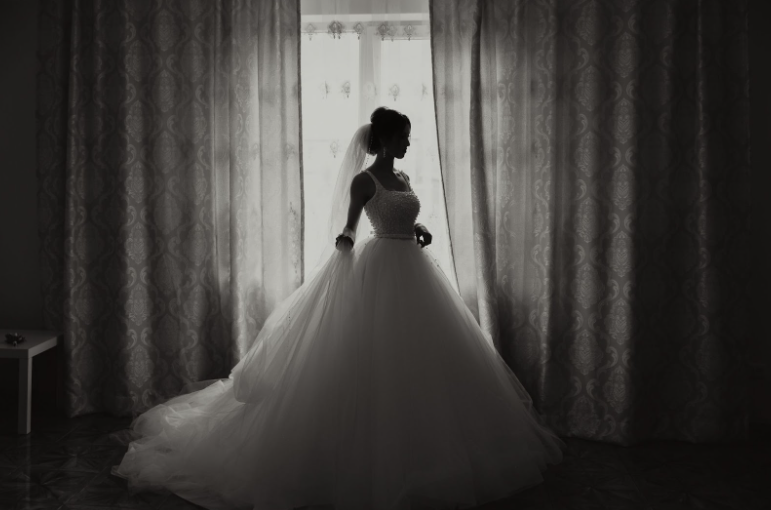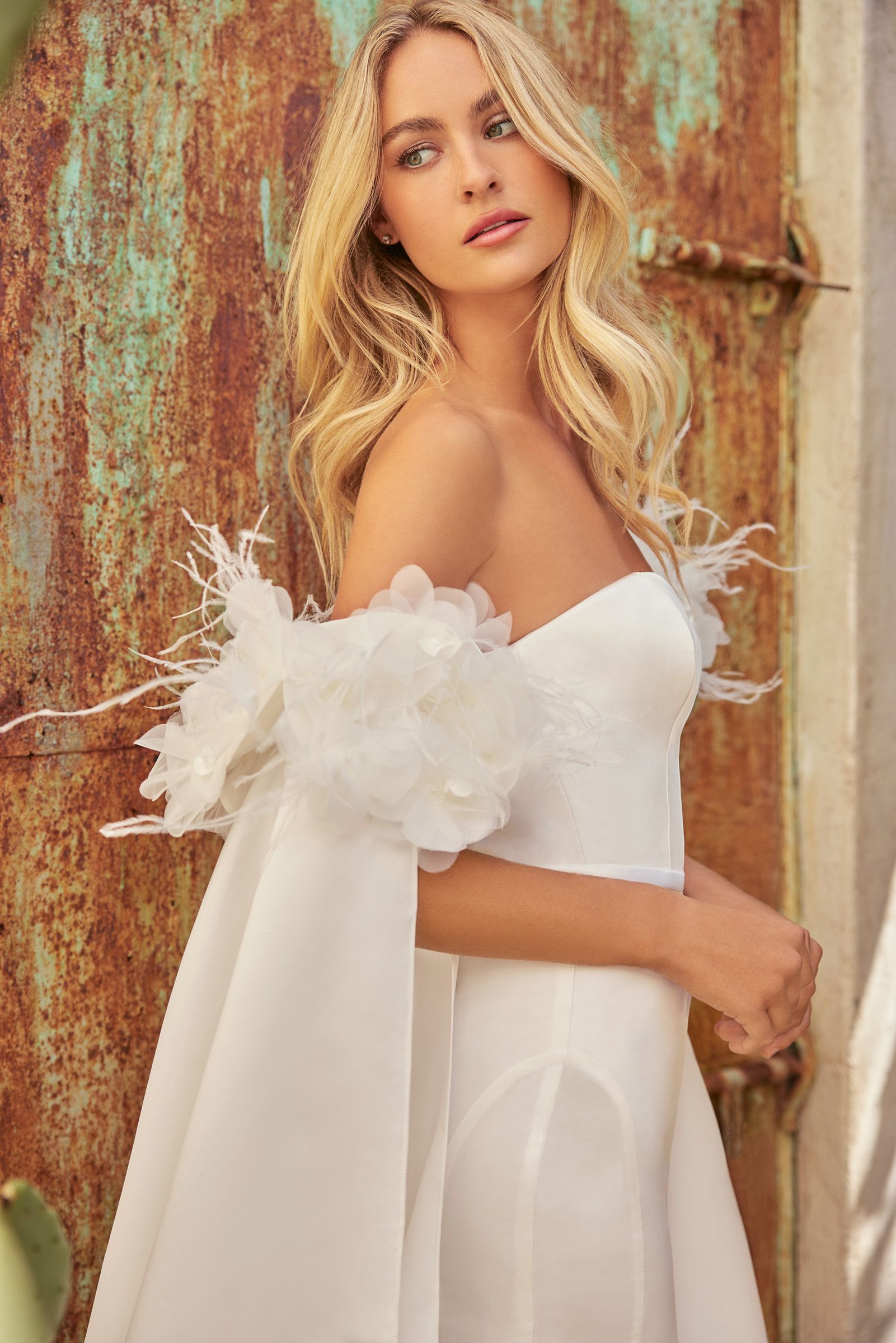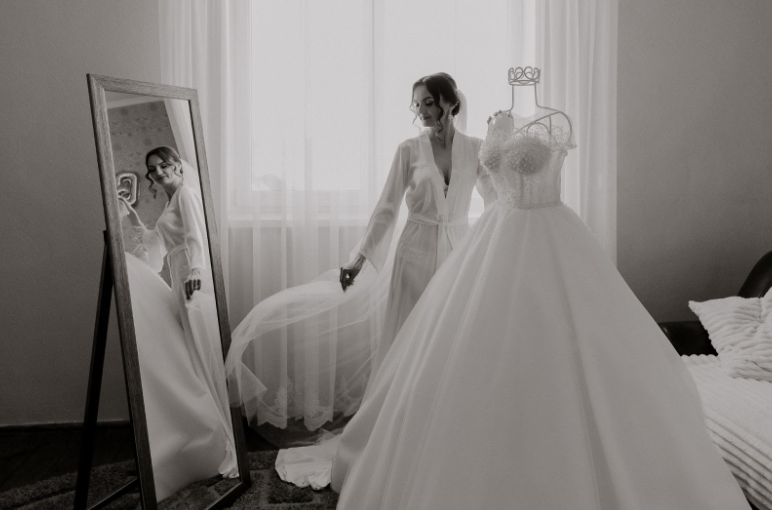How to Choose the Perfect Wedding Veil
Choosing the perfect wedding veil is a significant part of completing the bridal look. The veil is more than just an accessory; it's a symbol of tradition, romance, and personal style. From understanding the various types of veils to coordinating them with your wedding gown, there are numerous factors to consider.
Different Types of Wedding Veils
Wedding veils come in various styles, each offering a unique aesthetic and level of coverage. Here are some popular types:
Birdcage Veil
The birdcage veil is short and retro, often covering only the eyes or extending to the chin. It's a perfect choice for brides looking for a vintage or glamorous look.
Blusher Veil
A blusher veil consists of a single layer of tulle that covers the face and is typically lifted during the ceremony. It adds a touch of tradition and can be paired with various gown styles.
Fingertip Veil
The fingertip veil reaches the bride's fingertips when her arms are relaxed at her sides. This length is versatile and suits most dress styles, providing a balanced look.
Chapel Veil
Extending to the floor and slightly shorter than the train of the gown, the chapel veil offers a formal and elegant appearance without the dramatic length of a cathedral veil.
Cathedral Veil
The cathedral veil is the longest veil, extending beyond the train of the gown for a dramatic and grand look. It is ideal for formal and traditional weddings.
Matching the Veil to the Bride's Face Shape
Choosing a veil that complements your face shape can enhance your overall look. Here are some tips:
Round Face
Opt for a longer veil to elongate the face, creating a more balanced appearance.
Oval Face
An oval face is versatile and can complement most veil styles. Feel free to experiment with different lengths and designs.
Square Face
A veil with soft layers can soften strong jawlines, adding a gentle touch to your look.
Heart-Shaped Face
A veil that adds width around the jawline can balance the face, providing a harmonious look.
Coordinating the Veil with the Wedding Gown
The veil should complement the wedding gown, not compete with it. Here are some coordination tips:
Simple Gowns
Pair a simple gown with a more detailed veil, such as one with lace or beading, to add interest and texture.
Detailed Gowns
Opt for a simpler veil to avoid overwhelming the look. A plain tulle veil can balance a gown with intricate details.
Backless Gowns
Consider a sheer or minimal veil to showcase the gown's back. A fingertip or chapel veil can provide the right balance.
Vintage Gowns
Match a vintage gown with a vintage-style veil like a birdcage or blusher to maintain a cohesive theme.
Exploring Veil Materials and Their Effects
The material of the veil can significantly impact its look and feel. Here are some common materials:
Tulle
Lightweight and versatile, tulle is ideal for most veil styles. It offers a delicate and airy appearance.
Lace
Lace adds a romantic and vintage feel, perfect for detailed veils. It can enhance the overall elegance of the bridal look.
Silk
Luxurious and soft, silk is suitable for elegant and simple veils. It drapes beautifully and adds a touch of sophistication.
Organza
Organza offers a stiffer structure, making it ideal for voluminous veils. It provides a more defined shape and can add drama to the look.
Embellishments and Their Impact on the Veil
Embellishments can add personality and flair to the veil. Here are some popular options:
Beading
Beading adds sparkle and can complement beaded details on the gown, creating a cohesive look.
Embroidery
Embroidery provides a unique and personalized touch, allowing for custom designs and patterns.
Lace Appliqués
Lace appliqués enhance a romantic and classic look, adding texture and detail to the veil.
Crystals
Crystals add a touch of glamour and luxury, perfect for brides looking to make a statement.
Practical Considerations for Choosing a Veil
When selecting a veil, consider these practical aspects:
Comfort
Ensure the veil is not too heavy or cumbersome. It should be comfortable to wear throughout the ceremony and reception.
Weather
Consider the season and venue. Lighter fabrics are suitable for summer, while heavier materials are better for winter weddings.
Ceremony and Reception
Choose a veil that can be easily removed or adjusted for different parts of the day. This flexibility can enhance your comfort and convenience.
Budget
Balance quality and cost. Intricate details may increase the price, so prioritize what matters most to you.
Local Trends and Cultural Influences in Veil Choices
In Northern Utah, bridal trends often reflect a blend of modern and traditional styles. Popular veil choices among brides in this region include chapel and cathedral veils for their elegance and formality.
Cultural influences also play a significant role in veil choices. For example, brides from diverse cultural backgrounds may incorporate traditional elements into their veils, such as specific fabrics or embellishments that hold cultural significance.
Expert Tips for Finalizing the Bridal Look with the Perfect Veil
Consulting with a Bridal Stylist
The benefits of professional advice cannot be overstated. A bridal stylist can provide personalized recommendations based on your gown, face shape, and personal preferences.
Trying Multiple Styles
It's important to try different veils with your gown. This process can help you visualize the complete look and make an informed decision.
Personal Touches
Adding family heirlooms or custom details to the veil can make it uniquely yours. Consider incorporating meaningful elements that reflect your personal story.
Choosing the perfect wedding veil involves understanding different styles, matching them to your face shape and gown, and considering practical aspects. By following these guidelines, you can find a veil that enhances your bridal look and adds to the magic of your special day.
For personalized assistance in choosing the perfect wedding veil, contact Renee Atelier today our expert stylists are here to help you find a veil that complements your gown and enhances your bridal look.







